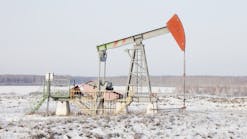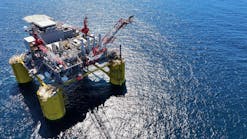Two Colonial Pipeline Co. accidents have prompted the National Transportation Safety Board to launch a special investigation of safety in the U.S. petroleum product pipeline industry.
Colonial had two No. 2 fuel oil spills within a 15 month period: a December 1991 leak into Durbin Creek and the Enoree River in South Carolina and a March 1993 spill in northern Virginia that fouled part of the Potomac River.
NTSB said the study may involve issues like construction accidents, damage prevention programs, adequacy of testing to identify pipeline damage, and minimization of spills after accidents.
The study will analyze Office of Pipeline Safety accident data, as well as information obtained from internal inspections of portions of Colonial's pipeline and later examination of excavated pipelines.
NTSB plans to complete the inquiry by yearend. Depending on the findings, it may recommend that the Transportation Department require added safety measures for petroleum products pipelines.
SOUTH CAROLINA
Colonial's 36 in. Line 2 ruptured Dec. 19, 1991, spilling 13,100 bbl of fuel oil into Durbin Creek, about 2.8 miles northeast of the company's Simpsonville, S.C., pump station.
It caused environmental pollution on 26 miles of waterways, including the Enoree River, and forced the towns of Clinton and Whitmire to use other water supplies.
NTSB said the probable cause was damage from a backhoe that worked for Carolina Springs Golf Course around the creek in July 1991.
Colonial noticed a pressure drop at 9:51 p.m. the following Dec. 19 and shut down the line by 10:03 p.m. Pipeline employees found the leak at 1:38 a.m. Dec. 20, coming from section of the pipeline buried 3 ft below the bottom of Durbin Creek.
NTSB said the damaged pipe showed evidence of mechanical damage from an outside force. The rupture was 47 in. long.
It said on July 1, 1991, the country club hired a backhoe operator to remove silt from the golf course's water pump intake at a dam on Durbin Creek, near the pipeline crossing.
NTSB said Colonial has had two other spills near the Simpsonville pump station. A May 1979 rupture spilled 8,000 bbl and a June 1979 rupture spilled 9,400 bbl of diesel fuel into Durbin Creek tributaries. NTS did not investigate either accident.
VIRGINIA
Colonial's Line 3, a 36 in. products pipeline, ruptured Mar. 28, 1993, spilling 9,708 bbl of No. 2 oil into Sugarland Run Creek and the Potomac River in Virginia. The spill threatened the water supply of the District of Columbia and suburban Virginia and Maryland cities.
NTSB said the rupture was caused by fatigue failure at a crack initiated by mechanical damage from heavy construction equipment.
The rupture was 52 in. long and as much as 5 in. wide. The gouge or dent in the pipe was one third the depth of the 0.344 in. W.T. pipe.
At 8:48 a.m. Mar. 28 a citizen at the scene saw the leak, and an employee in Colonial's Atlanta, Ga., control center noted a pressure drop. By 8:55 a.m. Colonial personnel had shut down the pipeline from Greensboro, N.C., to Dorsey Junction, Md.
When the rupture was excavated, investigators found large boulders and rocks on, around, and under the pipeline. They found evidence of mechanical damage near the rupture, including a dent in the pipe and two longitudinal scrapes.
The Transportation Department's Research and Special Programs Administration required Colonial to excavate another 700 ft of pipeline in the area and found several anomalies requiring repair.
County records showed more than 200 contractors and organizations had performed work near the rupture site between 1986 and the time of the accident. NTSB could not determine which had used heavy construction equipment near the damaged pipe.
Copyright 1994 Oil & Gas Journal. All Rights Reserved.


